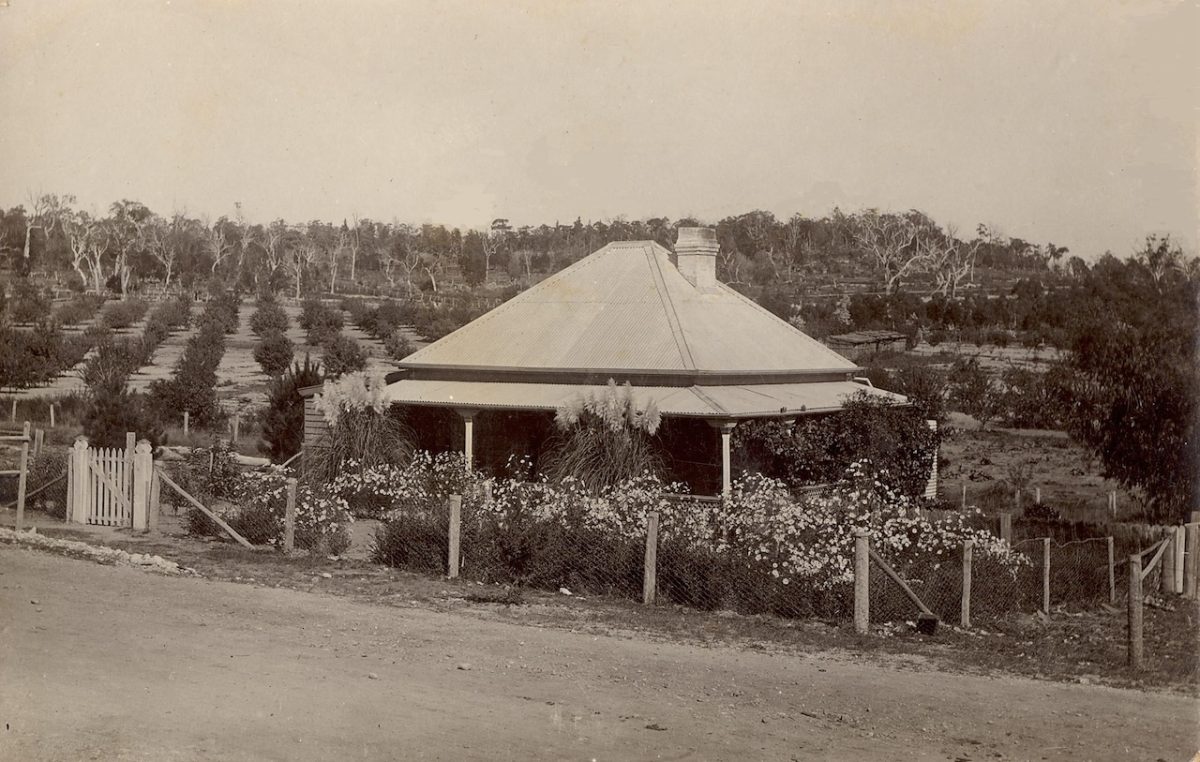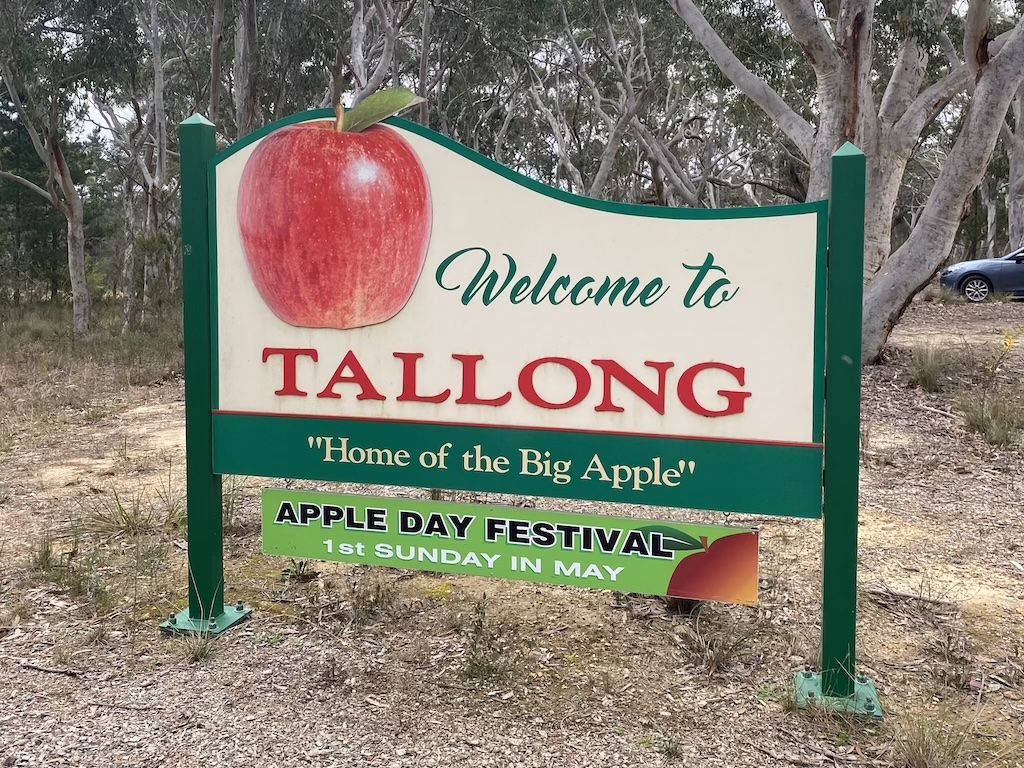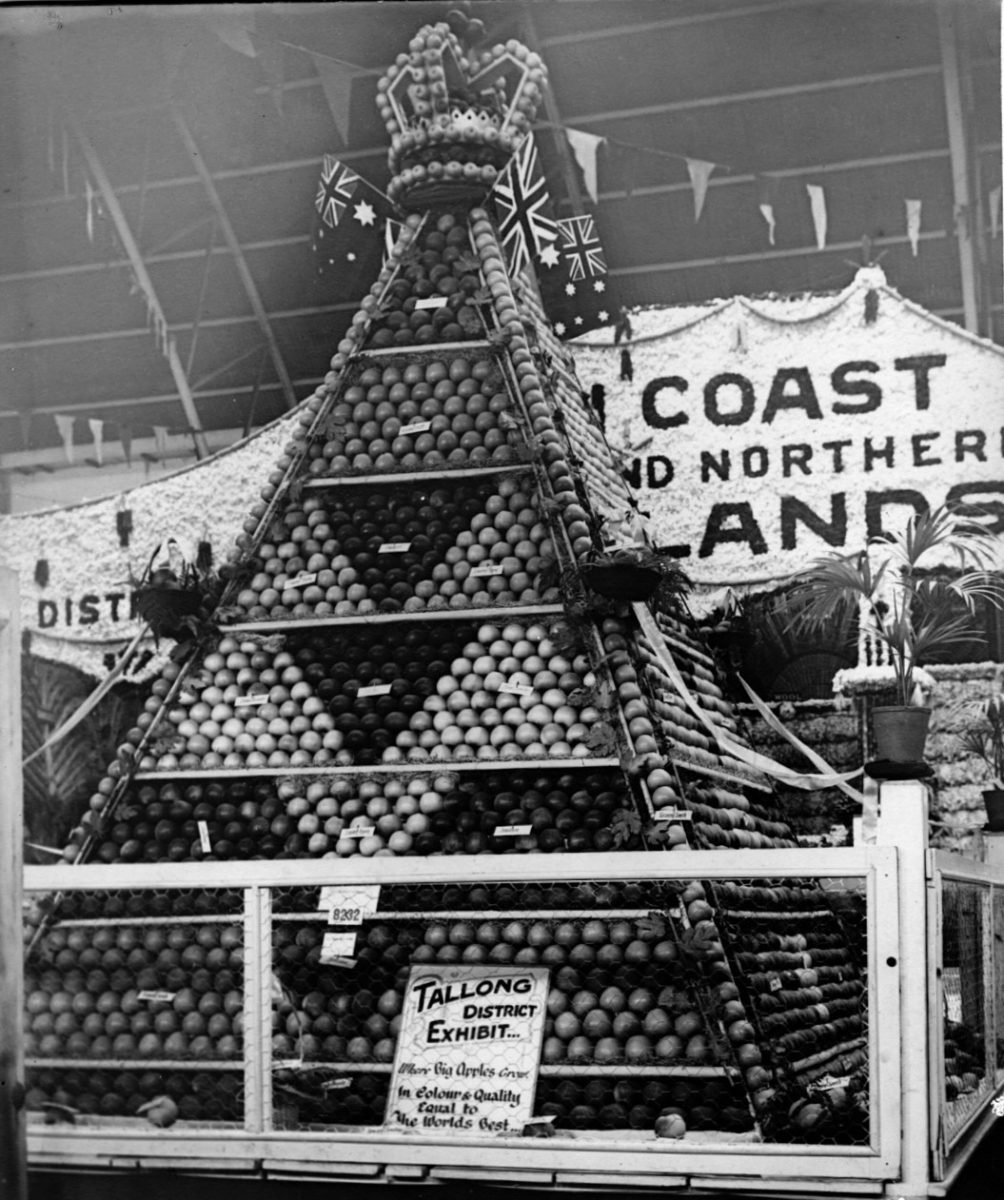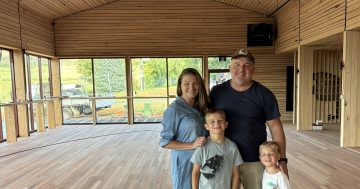
The home of Mr and Mrs Harry Davenport at Tallong. Looking west, the road in front of the house is now Caoura Road, but at the time it was just an access road for the Davenport houses. Historian Janet Black says the date is uncertain but probably before 1914. Photo: Davenport collection/Tallong Community Focus Group.
A pioneer’s deep regard for soil in 1900 put Tallong on the map for growing the biggest apples in NSW.
Keenly sought for the secret of his outstanding apples, Albert Davenport said it all came down to a man’s relationship with the soil.
“It is our first mother and father, and must be nourished,” he said.
Although Tallong is no longer a commercial apple destination, its latest residents nevertheless are nourishing their little village east of Goulburn with annual Apple Day festivals.
Undeterred when this year’s event in May was washed out, organisers have rescheduled Apple Day for Sunday, 29 September. It’s shaping up as a bumper event like the harvests of yesteryear.
The seeds of Apple Day were sown by Albert and his brother Harry, who began experimenting with growing fruit in swampy water and attacked the drainage problem while ignoring predictions of failure. A decade later, they had 40 acres (16 hectares) of trees.
The NSW Chamber of Agriculture declared Tallong ‘’The Land of the Big Apple’’. Visiting the Davenports’ orchards in 1910, a government fruit expert found apple tree branches bending under the heavy load of fruit.
“The ‘Five Crown’ apple trees are a perfect picture and 100 trees of this variety are carrying over 500 cases and not a grubby apple to be seen,” the expert, Mr W Allen, reported.
He said he had never seen such a combination of quality, size and perfect colour anywhere else. In April the following year, a fine lot of Rome Beauties, Jonathans, Buncombes, Five Crowns and Granny Smiths were reported from the same orchards. Even though the soil was light and poorer than other areas, the countryside was producing better apples, according to newspapers of the time.
In July 1921, 100 cases of Five Crown apples were exported to London, where their top price exceeded expectations.
Tallong resident Janet Black, who has researched and written about the village’s history, said in those early peak years, competition for prize-winning apples was fierce between Goulburn, Tallong and Wingello.
“From 1917 until 1949, when competition classes for apples and pears were removed from the Royal Easter Show, village producers under the banner of the ‘Tallong Fruit Growers’ Association’ were very successful,” she said.
“We were the runners-up in 1920 (to Goulburn, I think), could not compete in 1922 due to the crop being damaged in a hailstorm, but we won first place for both apples and pears in at least 1925, 1926 and 1940.”
Albert Davenport died on 13 December, 1935, having won widespread praise and recognition for his contributions to the Tallong district.

An annual festival usually scheduled for May, the Tallong Apple Day this year will be held on Sunday, 29 September. Photo: John Thistleton.
Janet says the horrendous Chatsbury bushfire (near Taralga) in 1965 swept all before it, including the ageing Tallong orchards, as the blaze raged all the way to Nowra.
But even this destructive fire was insufficient to extinguish the legacy of Tallong’s apples. Before the suspension of the festival due to COVID-19, 10,000-plus people were attending the Apple Day Festival, according to one of the organisers, Kerry Lawrence.
“It is nearly our 20th year,” Kerry said. “We have been running for a fair while. It has grown bigger and bigger every year.
“We have pig races and people love those, and we usually have sheep shearing.
“People love country-type activities. We have had people from Western Australia, Darwin. I get phone calls from people before they book flights out of Melbourne. They come from everywhere.”
Tallong stallholders will be among 70 vendors with homemade food, while others will be selling country wear, mainstream clothing, homemade goods, and toys.
Medieval battles, whip cracking, a pet show, woodchopping, rides and a display of internal-combustion engines are being organised. Bags of apples will be on sale.
The first festival was a much humbler affair, aimed as a get-together for the local residents over a barbecue to meet other people.
“From there it has grown and the new committee, myself and Christine Wursten are both on it, we all just ran with it,” Kerry said.

Tallong’s winning entry in the 1926 District Fruit Competition at the Sydney Royal Easter Show. The card on the front of the exhibit says: ”Where Big Apples Grow; in colour and quality; equal to the world’s best. Photo: Tallong Community collection/Janet Black.
Kerry says that with a population of about 900 people today, Tallong has continued to grow over the past decade with people coming from Sydney.
“A lot of the older generation who used to live here have all passed on now, so it is different now,” she said.
The Apple Day Festival is on Sunday, 29 September, at 2 Memorial Drive, Tallong, from 9 am to 4 pm. Parking is available in the village; follow the signs.
Original Article published by John Thistleton on About Regional.













